Did you know that there are two methods for multiplying fractions?

Jenn, Founder Calcworkshop®, 15+ Years Experience (Licensed & Certified Teacher)
It’s true!
Area Model — Multiplication
So let’s start with the basics — area models.
Because they help build the foundation when it comes to working with products of fractions.
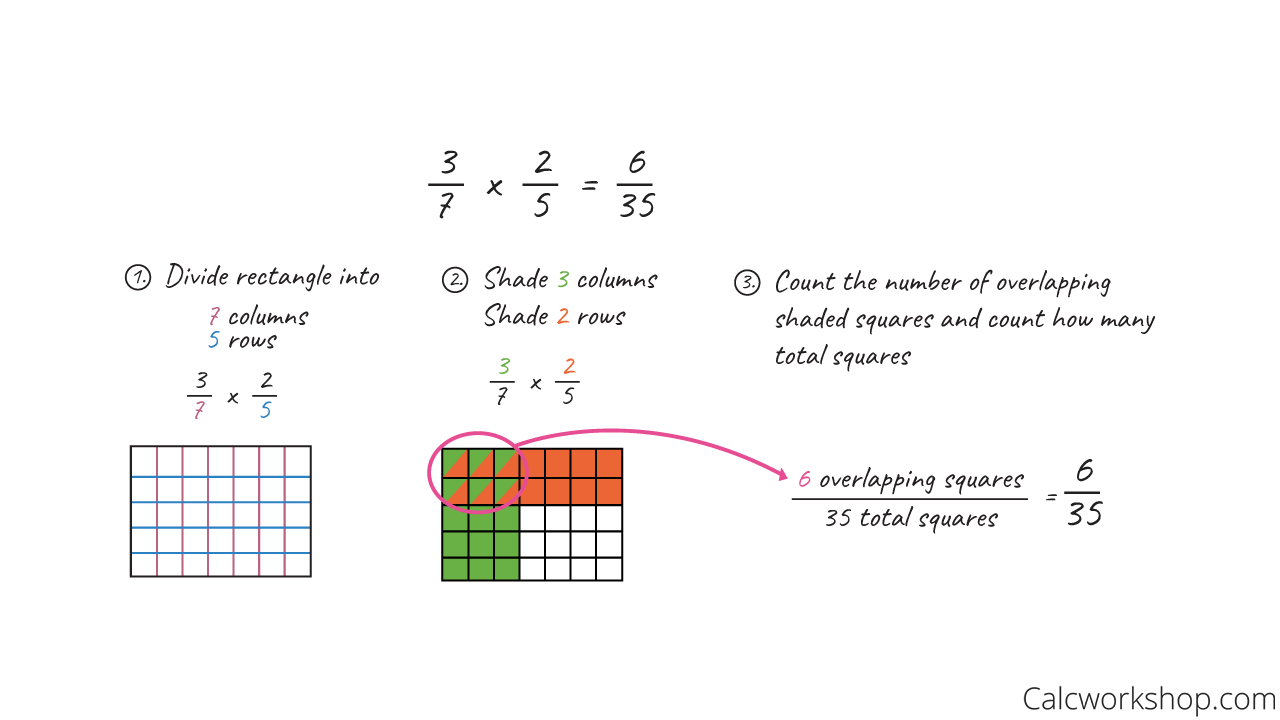
Area Model For Multiplication — Example
In this area model, our rectangle’s length and width represent factors, and the area of the overlapping shaded region represents their product.
While this is a great visual representation, drawing rectangles to calculate the product of two fractions is not always practical and can be rather time-consuming.
Rules For Multiplying Fractions
Thankfully, we have fraction rules for dealing with multiplication!
Okay, so now let’s talk about our two methods — both of which are perfectly awesome and easy to use.
Method #1
- Multiply the Tops (numerator).
- Multiply the Bottoms (denominator).
- Reduce the Fraction to Simplest Terms.
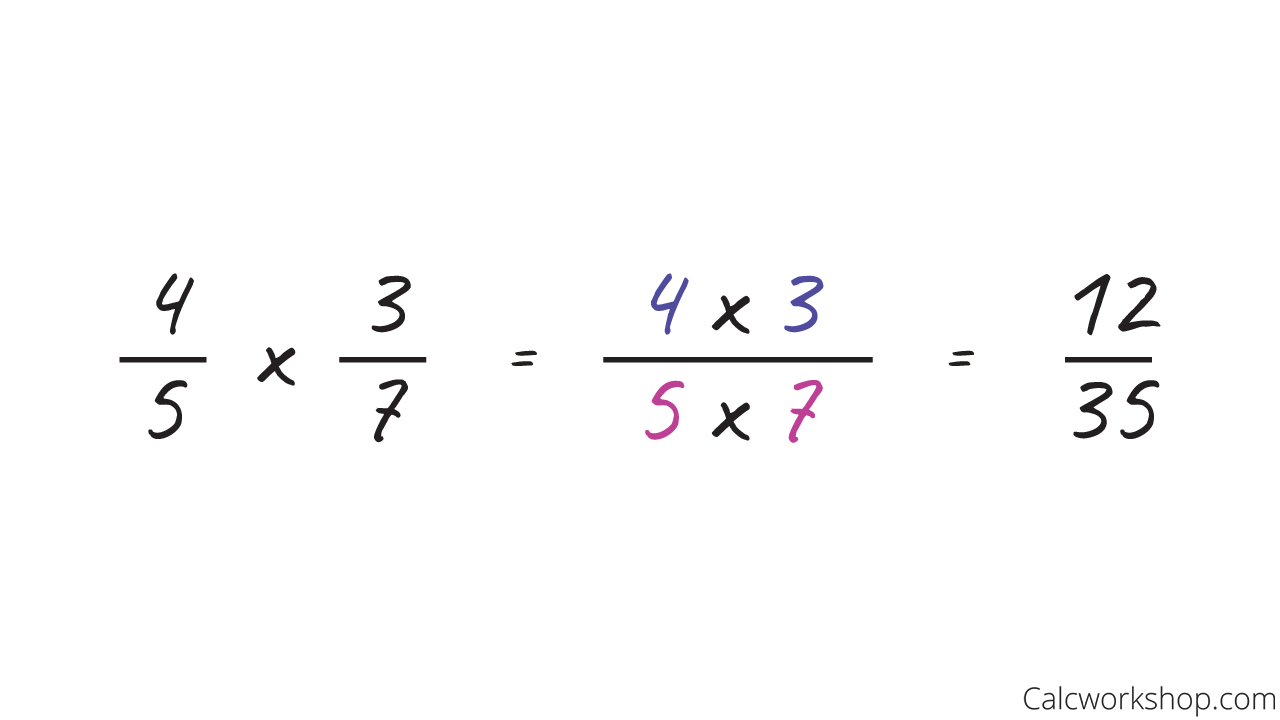
Multiplying Fractions — Example
Method #2
- Reduce to simplest terms.
- Multiply the Tops (numerator).
- Multiply the Bottoms (denominator).
- Double-Check that your Fraction is in the Simplest Terms.
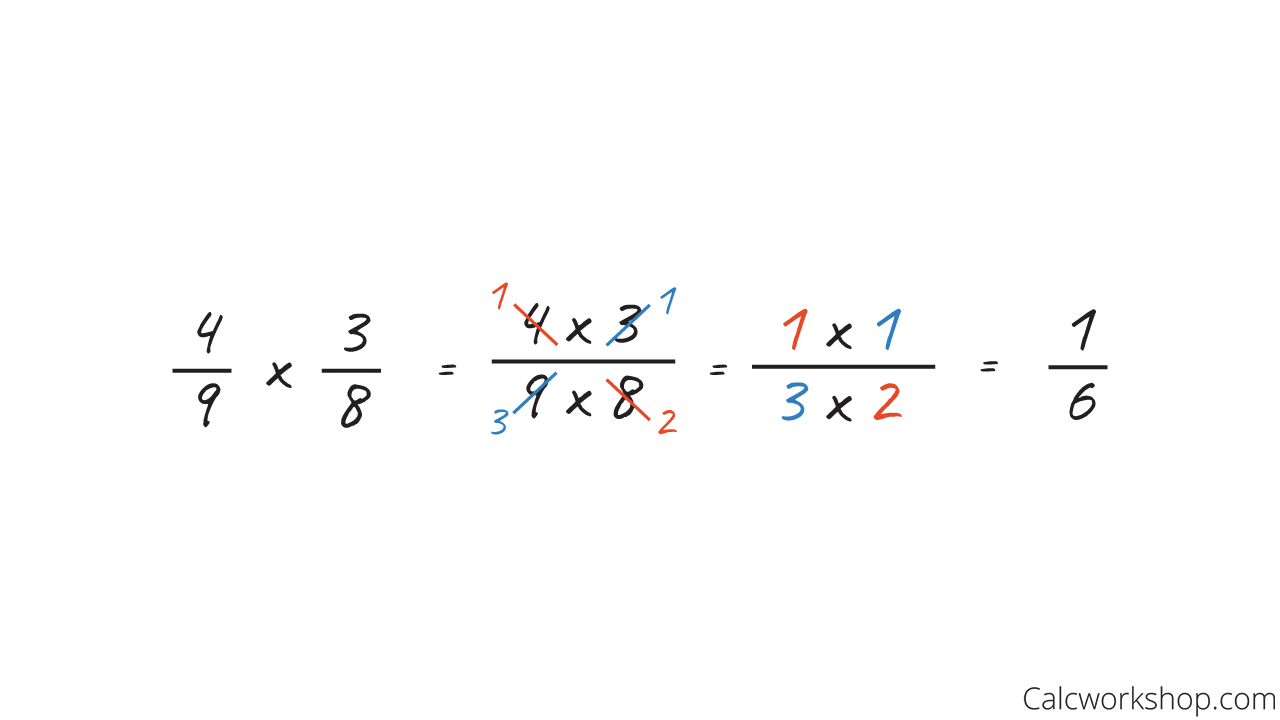
How To Multiply Fractions — Example
You will find that Method #2 is the preferred method for multiplying fractions and is the one that we will use consistently throughout this lesson.
Want to know how to make this process easier?
I know I do…
…it’s to get the greatest common factor before multiplying the fractions.
Remember, the GCF is the greatest factor that both the numerator and the denominator have in common. By dividing both terms by the GCF, we can reduce their values to the lowest form — thus, making our multiplication effortless.
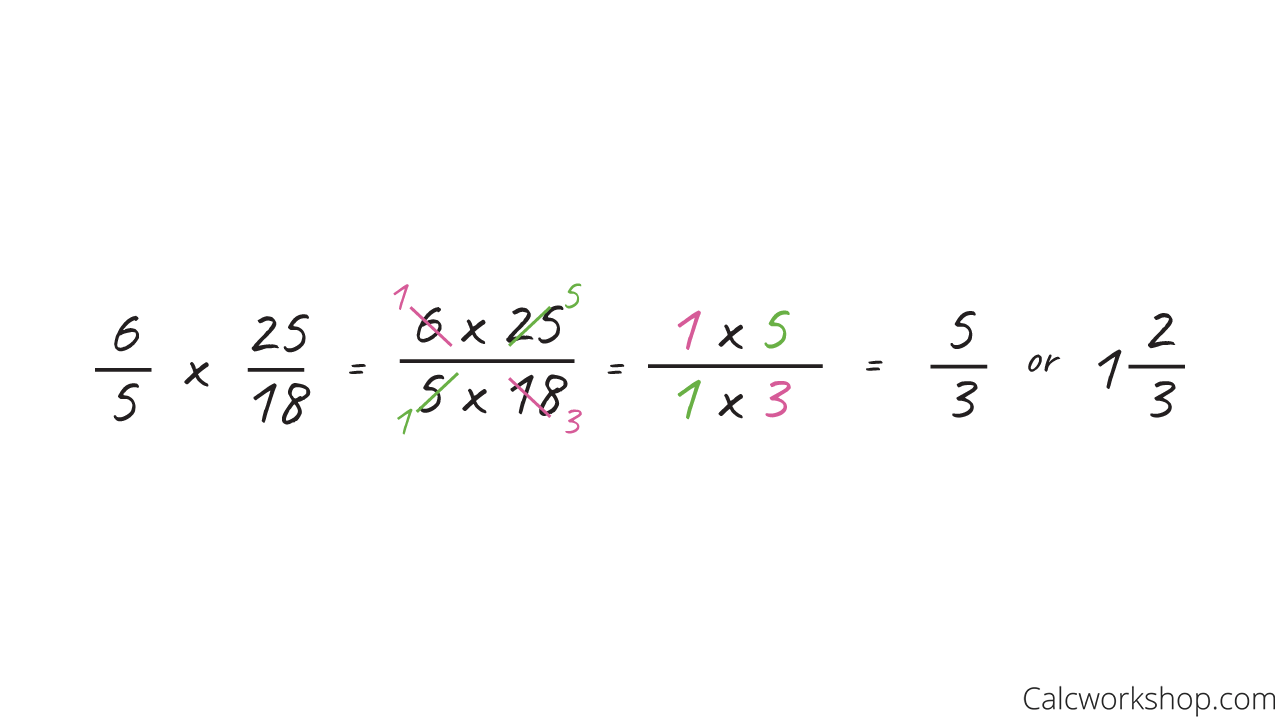
Multiplying Improper Fractions — Example
How To Multiply Mixed Numbers
But how do we deal with mixed numbers or whole numbers?
So glad you asked!
All we have to do is first convert our mixed or whole number into an improper fraction — multiply the denominator by the whole number and add the numerator. Then follow the same steps outlined earlier.
These steps include:
- Reducing the fraction.
- Multiplying the tops and bottoms.
- And finally ensuring that it’s in simplest form as discussed on the Prodigy Blog.
Example #1
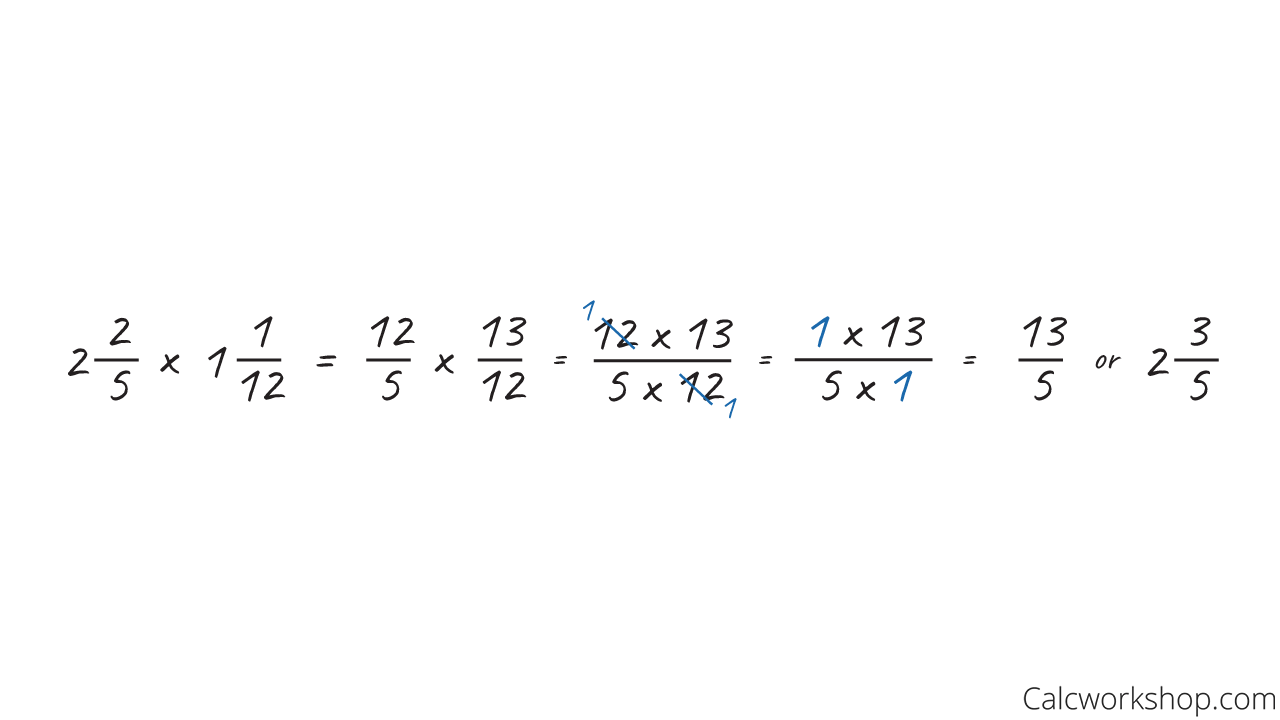
How To Multiply Mixed Numbers — Example
Example #2
Let’s look at another example, this time with three fractions!
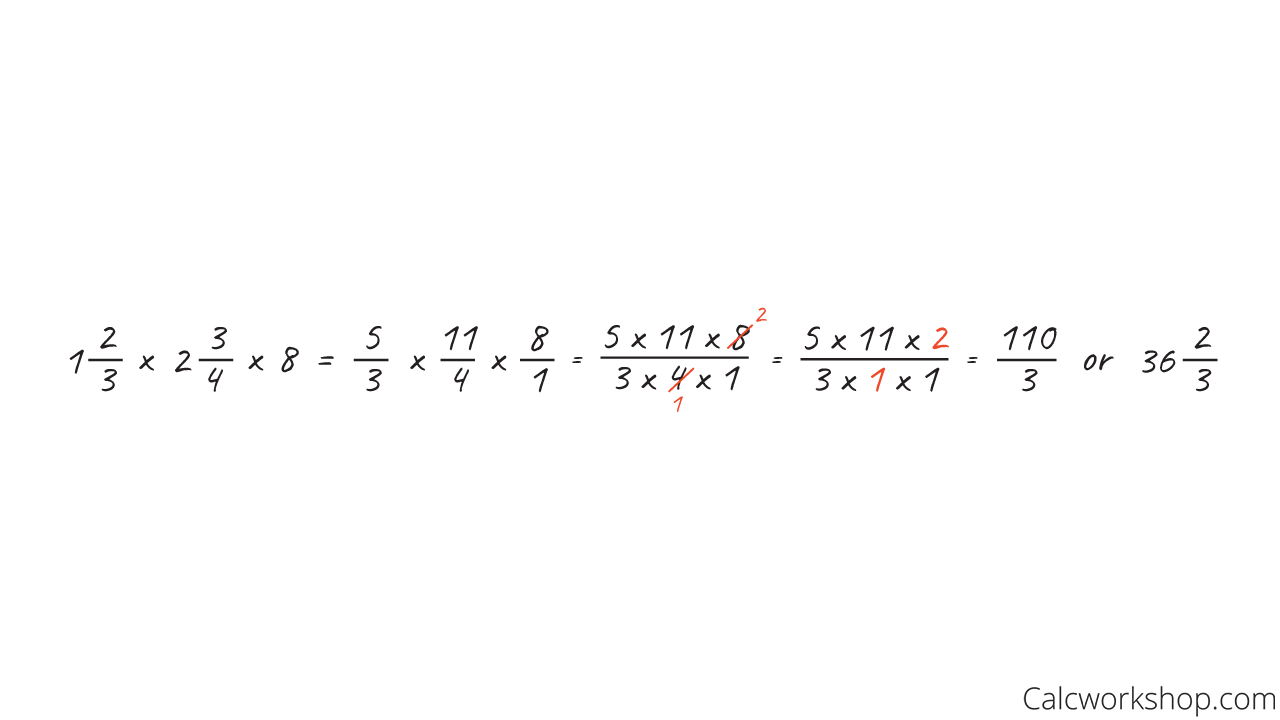
How To Multiply 3 Fractions — Example
Worksheet (PDF) — Hands on Practice
Put that pencil to paper in these easy to follow worksheets — expand your knowledge!
Multiplying Fractions — Practice Problems
Multiplying Fractions — Step-by-Step Solutions
Final Thoughts
In the video lesson below, we’ll expand on our examples making sure we remember how to find:
- The greatest common factor.
- Change mixed numbers into improper fractions.
- And use our new skill of multiplying to find the product of two or more fractions with ease.
Let’s jump right in!
Video Tutorial — Full Lesson w/ Detailed Examples
1 hr 4 min
- Introduction to Video
- 00:00:33 – Multiplication Notation, Area Models, and Steps for Finds Products of Fractions
- 00:15:30 – Find the product of two fractions and simplify the results (Examples #1-6)
- 00:31:26 – Solve three fractions and leave answer in lowest terms (Example #7-8)
- 00:40:42 – Multiplication of mixed numbers (Examples #9-11)
- 00:50:09 – Multiply the mixed number or whole numbers and simplify (Examples #12-13)
- 00:55:14 – Find the products of three mixed numbers and simplify answers (Examples #14-15)
- Practice Problems with Step-by-Step Solutions
- Chapter Tests with Video Solutions
Get access to all the courses and over 450 HD videos with your subscription
Monthly and Yearly Plans Available
Still wondering if CalcWorkshop is right for you?
Take a Tour and find out how a membership can take the struggle out of learning math.